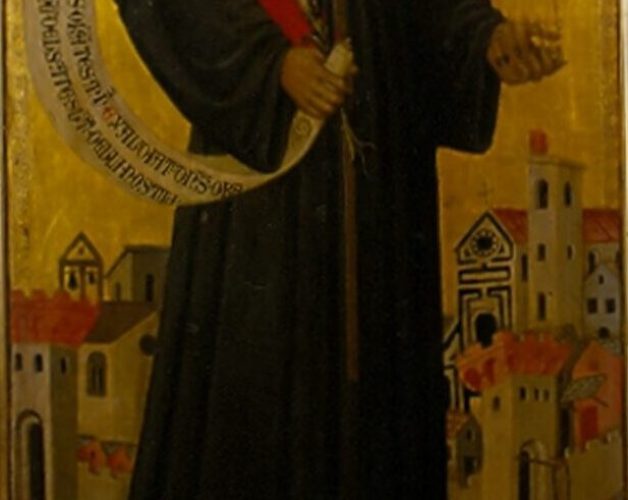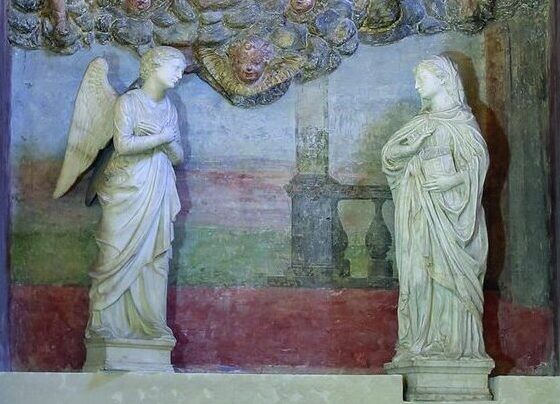In the first chapel on the left is a panel painted in 1445 by Bicci di Lorenzo depicting St Nicholas of Tolentino protecting Empoli from the plague. In addition to the image of the saint, we can see one of the oldest images of Empoli, surrounded by 14th-century walls and distinguished on the right by the bichrome façade of the collegiate church and on the left by the massive structure of Santo Stefano, above which the bell tower rises.
Today, the 15th-century painting has been ‘inserted’ inside the 1633 painting by Francesco Furini depicting the Madonna giving the Rosary to St Dominic.


Today, on the altar of the Compagnia della Santissima Annunziata is the sculptural group made in 1447 by Bernardo Rossellino portraying an Annunciation. The two figures, the angel Gabriel and the Virgin Mary, made of white marble, fully reflect the artist’s classicist approach. He is known for having created, around the middle of the 15th century, the famous Funeral Monument to Leonardo Bruni in Santa Croce in Florence. He was also the architect for the layout of the ancient village of Corsignano, today Pienza, following the principles of Renaissance town planning and architecture, on commission by Pope Pius II Piccolomini.
In 1424, the Compagnia della Croce called Masolino da Panicale to fresco the chapel of Sant’Elena (the last chapel on the right aisle).
The decorative cycle, which must have been one of the most splendid of the Florentine painting of the era, was almost completely destroyed in 1663 in order to install an imposing pietra serena altar. Only a few fragments of the original frescoes and large portions of the sinopia pigments have survived. The iconographic cycle illustrated the story of the True Cross, as recounted in the Legenda Aurea [The Golden Legend] by Jacopo da Varazze and inspired by the same cycle of frescoes painted by Agnolo Gaddi in Santa Croce. Among the surviving portions of the fresco, we also find a niche with books and cruets that allows us to appreciate Masolino’s attention to the representation of perspective space through the effects of light on objects.
Masolino’s work also took in the area of the right transept where the lunette with the Virgin and Child between Angels and the St Ives among the Pupils are still clearly visible today.

It is possible to visit the church with the ticket for the Museum of the collegiate church of Sant’Andrea. For information and guided tours contact Empoli Musei (tel. 0571 76714)
